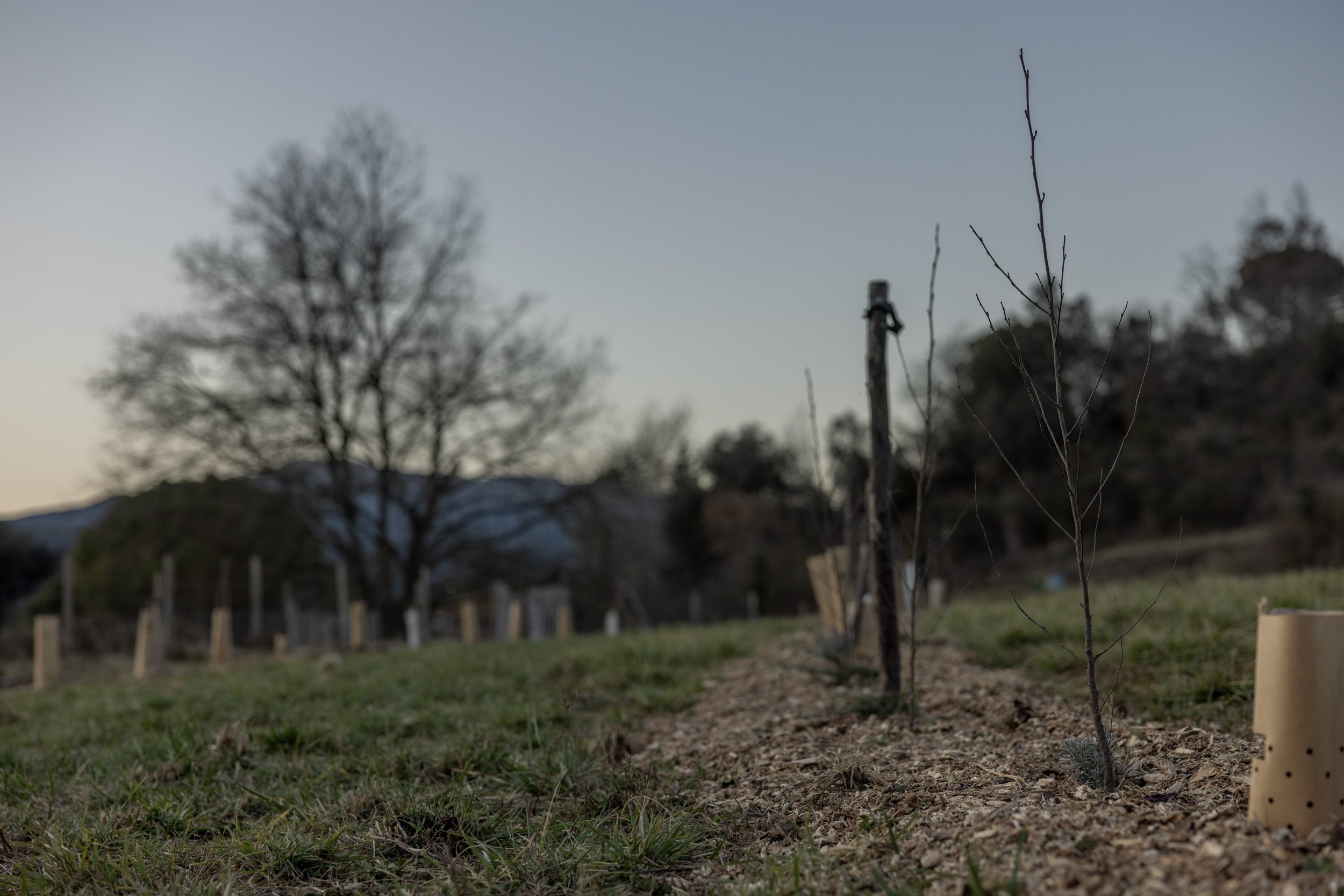Agroforestry
As you drive to Sota la Quinta, you pass through two fields. Over the past few years, we have turned them into a mixed growing system with nuts, vines, olives, pomegranates, truffled oaks and berries as crops species and alders, paulownia and willows for biomass and shade. Most trees were chosen for a hotter and drier climate. On the lower field, we planted in the winter of 2022/23. The rows follow contour lines and are planned according to succession principles, which mimics the natural way a forest evolves. There are fast growing, sun-loving, pioneer species like paulownia and slow growing, target species like olives. Over time, we will cut back the pioneer species to give space, sun and nutrients for taget species. We planted the upper field in 2019/20 with olives and in 2022/23 we added tree hazel, hazel, walnuts, alders, paulownia, sage, rosemary, thyme, lavender. Between the rows, there are flowering fields with sainfoin, alfalfa, sunflowers, Sudan gras and whatever provides biomass, food for wild bees and improves soil structure and carbon content.
FIELD II
The second field at Sota la Quinta was done with more knowledge and planning. It has seven rows with olives (Hojiblanca) and vines (Monastrell) as the main crop species. We are also experimenting with pomegranate and truffled oaks. For biomass and shade, we planted alders, paulownia and willows from local cuttings.
FIELD II
In the undergrowth, you’ll find comfrey, sunflowers and much more. The rows are mulched with wood chips, which in the first year has already led to a visible increase in soil life closer to the surface. It is full of earthworms and countless other species, mostly invisible to the human eye.
FIELD I
We planted Field I in 2019/20. Initially, it only had olives (Arbequina, Empeltre and Noire de Nyons). In 2022/23, we added alders, hazel, tree hazel, walnuts, pomegranate, various berries and herbaceous plants.
Field I
Field I was not done with a lot of knowledge. In 2022/23 we tried to adapt existing rows to follow the contour lines a bit more. As you can see on the left, we also added a swale in order to slow down water.



